During a visit to an exercise range where he watched tests of ‘kamikaze’ drones in action, North Korean leader Kim Jong Un announced the country would begin mass production of one-way attack uncrewed aerial vehicles (UAVs). The development comes as North Korea and Russia significantly step up their military cooperation — including joint work on drones — raising the possibility that North Korean UAVs could start being used in the war in Ukraine before too long.
North Korean state media reported on Kim’s appearance at the firing range today, also publishing photos and a video showing the live-fire tests. The North Korean leader was seen watching the drones strike targets including a BMW sedan and a decommissioned T-34 tank. The likely location of the exercise was close to Pyongyang International Airport, according to open-source analysis.
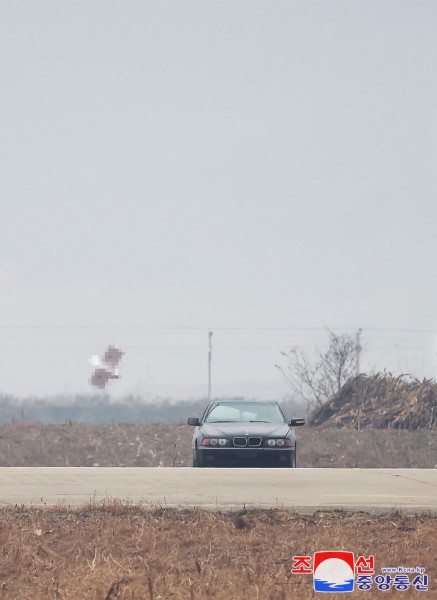
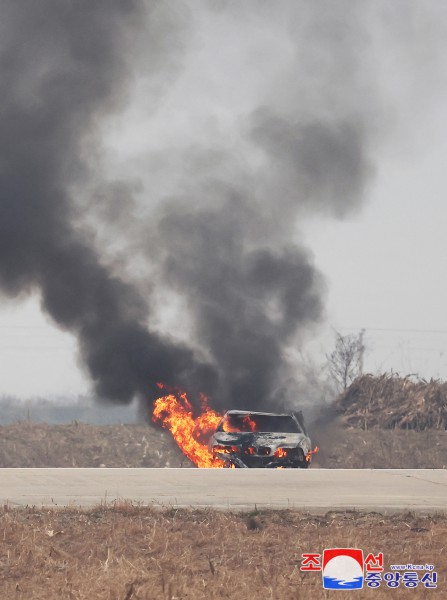

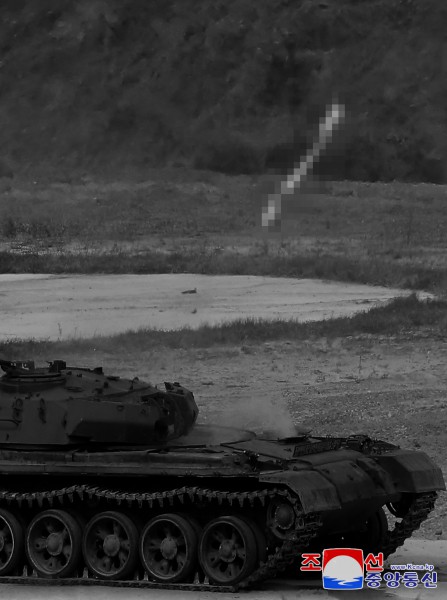
Kim called on officials to “quickly establish a mass-production system and begin full-scale production as soon as possible,” according to a report in the Rodong Sinmun, the official newspaper of the Central Committee of the Workers’ Party of Korea, translated by news aggregator KCNA Watch.
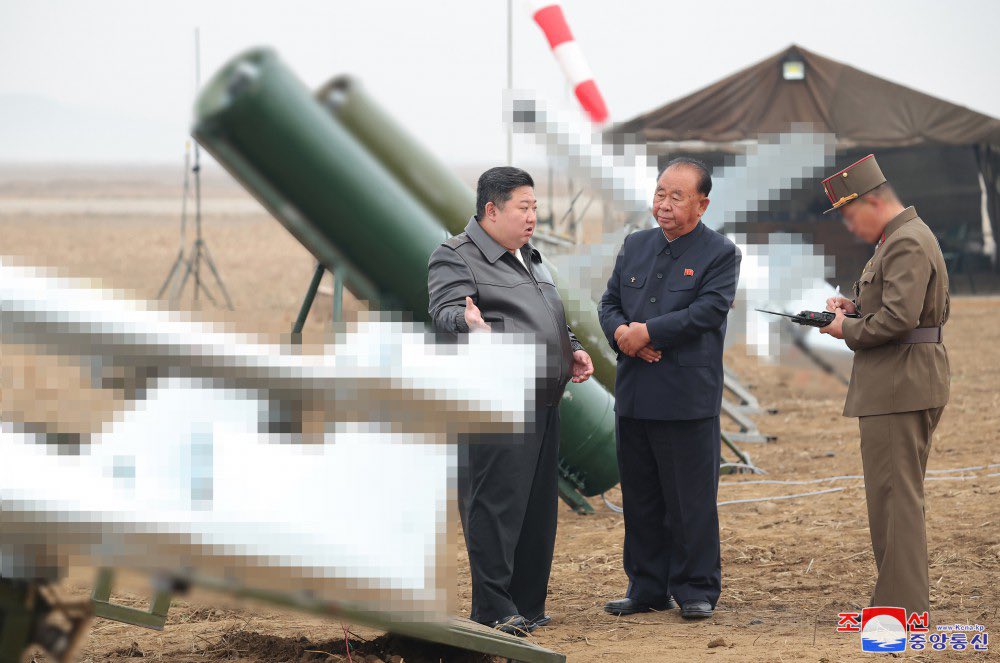
“The scope of their use in military operations is constantly expanding due to their low production costs and simple manufacturing processes,” Kim said, according to the same source.
The state-released imagery had the details of the drones pixelated, but they appear to be the same types we profiled back in August and which, we assessed back then, appeared very similar in outward appearance to the Israeli-made Harop and the Hero-400 loitering munitions. The second, X-wing drone also has more than a passing resemblance to members of the Lancet family, although the Israeli Hero-400 seems to be a closer match overall.
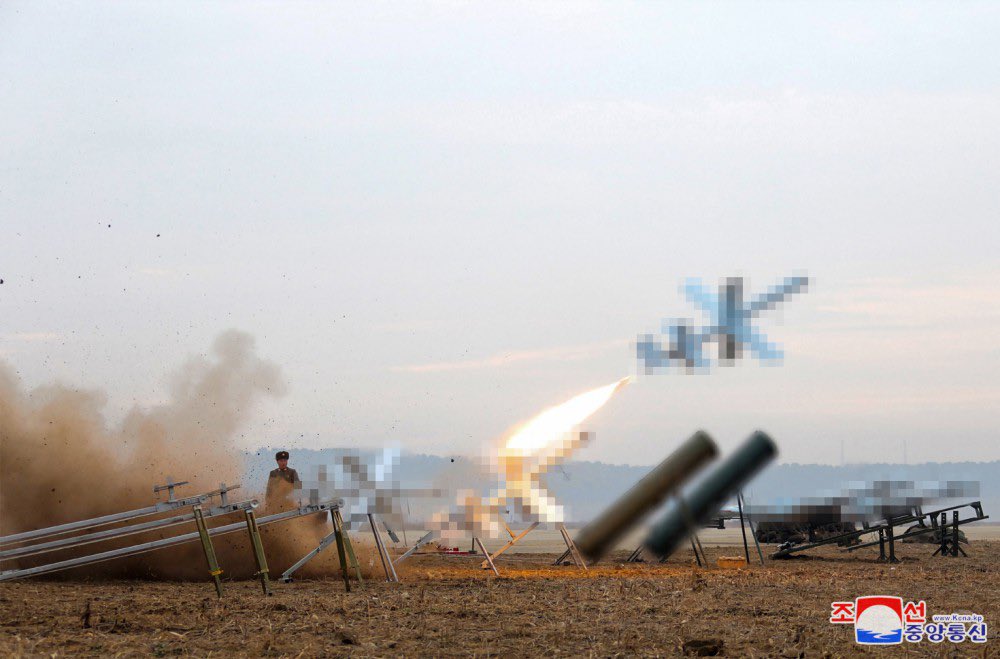

You can read our previous analysis of the two drones here — which included raising the possibility of them eventually being exported to Russia and potentially other clients.
The latest imagery reveals more details of the launch systems for the two drones. The Harop lookalike takes off from a conventional rail-type launcher, while the X-wing drone that appears similar to the Hero-400 can be launched from either a portable rail launcher or from a canister-like tube.
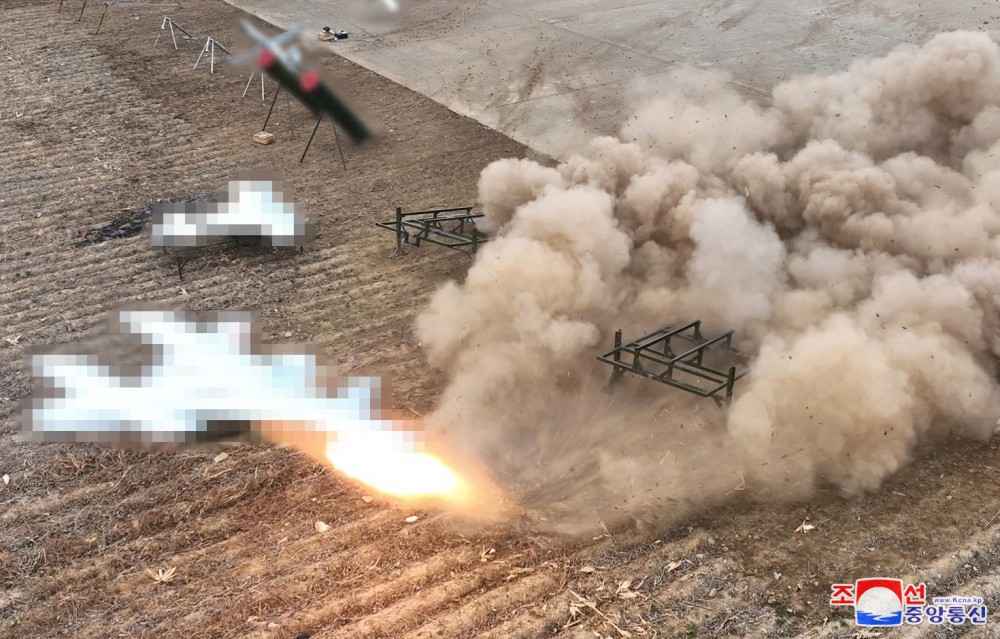
In the latest reports, the North Korean state media claims the drones are products of the Unmanned Aerial Technology Complex, or UATC.
The report from Rodong Sinmun today claimed the two drones are “designed for use across different strike ranges on land and sea and are tasked with precise strikes on designated targets.”

When they were unveiled, there were suggestions from North Korea that the drones might use a rudimentary form of artificial intelligence for a degree of automated target detection and engagement, although details were scarce. TWZ surmised that reports to this effect might have referred to detect radar emissions along a pre-planned route, or some basic form of visual target recognition. Meanwhile, the looming prospect of drones of all kinds using more advanced artificial intelligence on a regular basis is also something we have discussed in the past.
The statements today said the drones “flew along pre-set tactical routes within various strike ranges and successfully carried out precise strikes on their targets.”
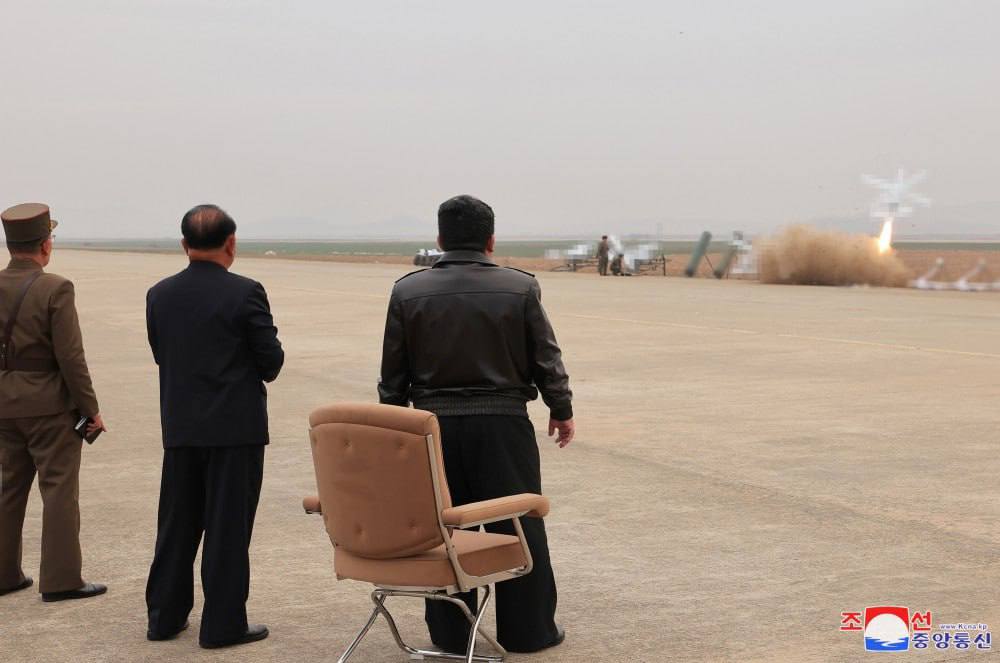
Since these types of drones first appeared in the summer, the military relationship between Pyongyang and Moscow has deepened considerably, now including the deployment of thousands of troops for Russia’s conflict in Ukraine.
So far, North Korea has supplied Russia with a variety of weapons that it’s employed in Ukraine, including KN-23 short-range ballistic missiles (SRBMs), Bulsae-4 anti-tank missiles, and rocket-propelled grenades. Most significant — at least in terms of numbers — has been Pyongyang’s provision of artillery ammunition, mostly in 122mm and 152mm caliber, to feed Russia’s unceasing demand for shells.
According to a recent assessment from the South Korean National Intelligence Service (NIS), North Korea has likely delivered more than eight million 122mm and 152mm shells to Russia so far.
Only yesterday, we reported on the appearance of North Korean-made 170mm M1989 Koksan self-propelled artillery units being transported by rail in Krasnoyarsk, in central Russia. This may well be a sign that North Korea is also now providing Russia with heavy artillery, although it’s possible these units were heading to Ukraine for use by North Korean troops, too.
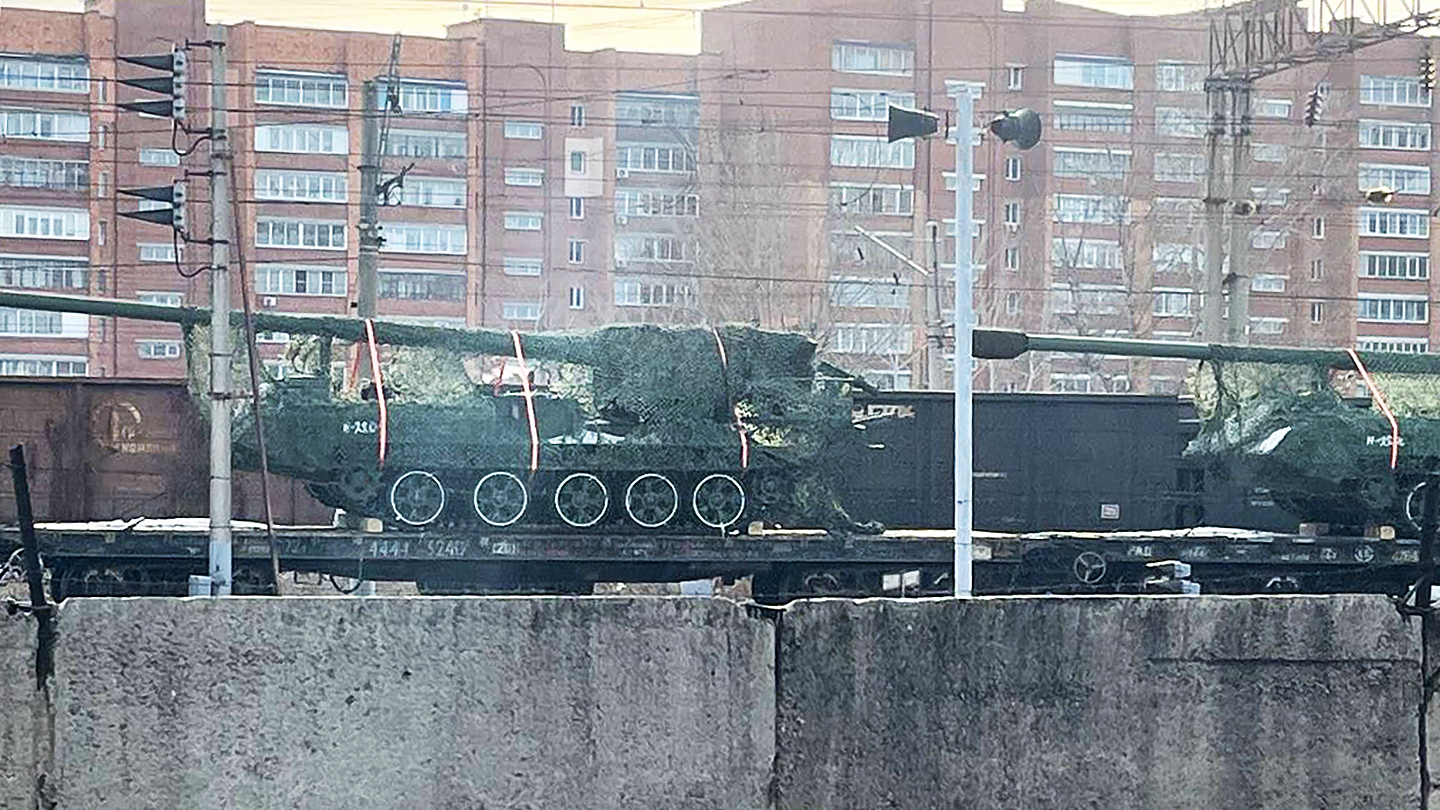
With all this in mind, it would not be a huge surprise if Russia calls upon North Korea to provide one-way attack drones, to bolster its own production of these weapons, which have become a significant feature of the battlefield in Ukraine, with both sides, with larger and longer-range types, such as the Shahed, regularly attacking infrastructure and urban targets across Ukraine.
It should be noted here that it’s not entirely clear what Pyongyang is getting in return for all this, although as well as hard currency, it seems likely that it is receiving technological assistance and could also be getting Russian arms, as well.
There have been various signs that North Korea and Russia are now collaborating on drone programs.
This seems to include Moscow providing Pyongyang with technical assistance on uncrewed aerial vehicles.
Earlier this month, Ukrainian President Volodymyr Zelensky said North Korean workers were being sent to Russia to work in factories producing kamikaze drones. While the UAVs in question would likely be of Russian design, this could be part of a broader technical agreement in which North Korea gains experience in manufacturing these types of drones.
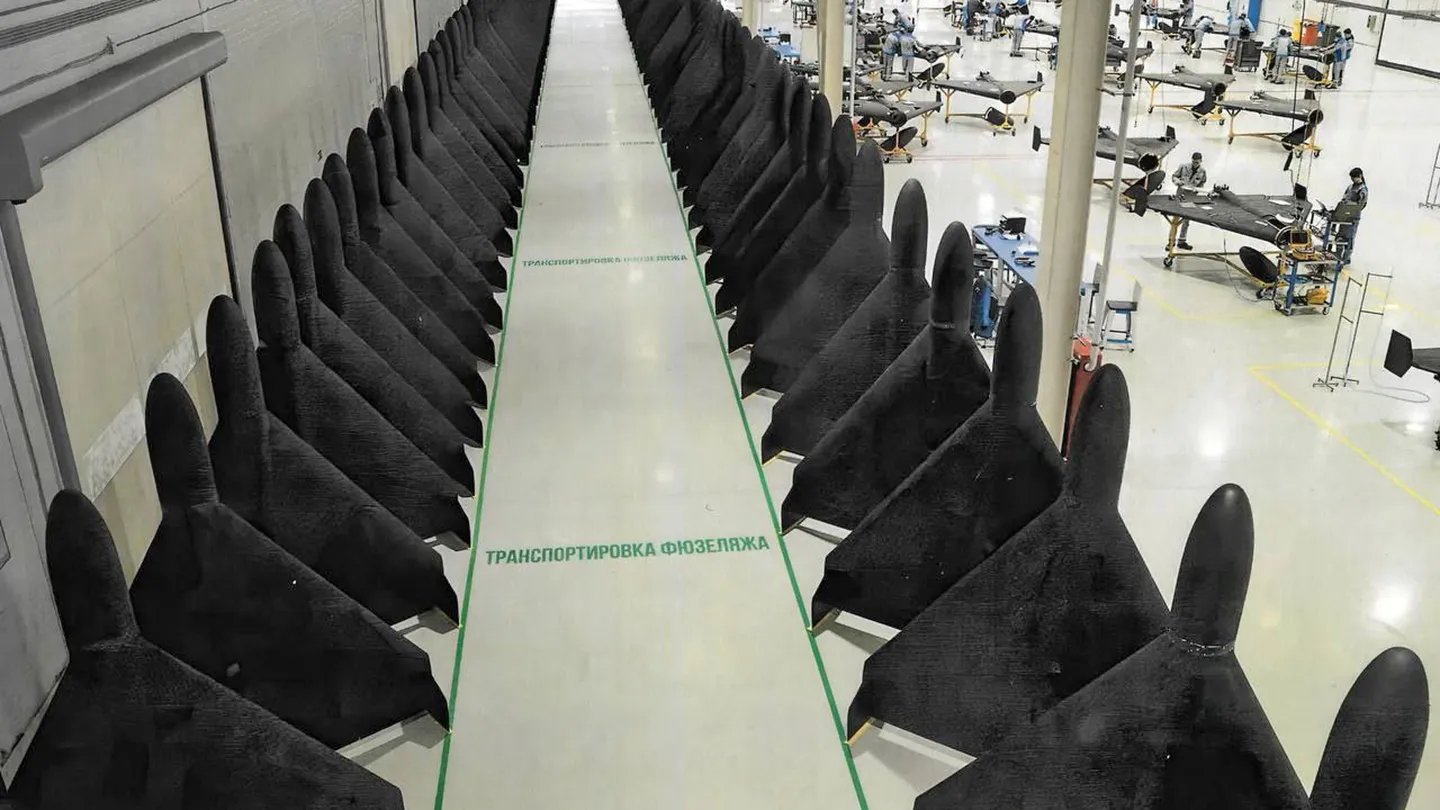
There certainly appears to be growing efforts to build up North Korea’s drone-manufacturing base, even before today’s announcement. In June this year, it was reported that a new large-scale UAV factory was being built near Panghyon Airbase.
On an operational level, there is also growing evidence that drone units from North Korea and Russia are working together more closely.
South Korean intelligence has reportedly found evidence of North Korean troops receiving training in drone operations in Russia.
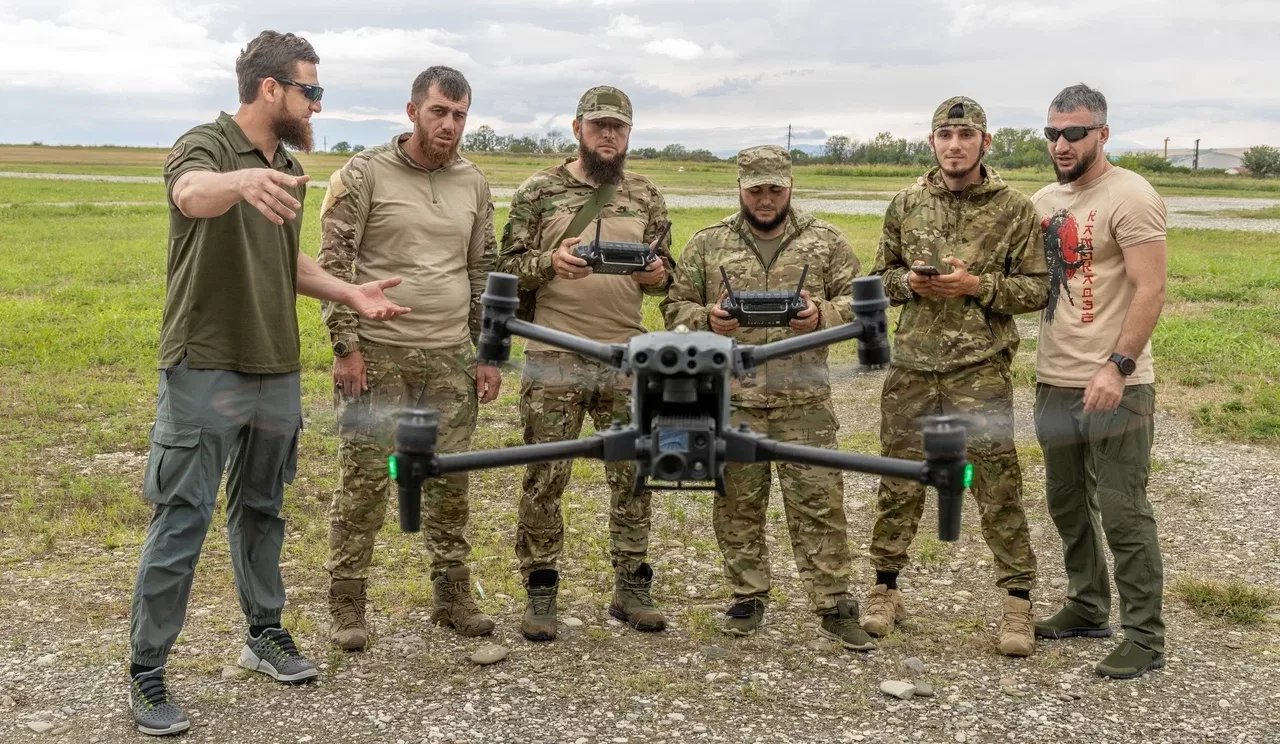
Last week, Business Insider cited Andrii Kovalenko, head of Ukraine’s Center for Countering Disinformation, who also said that North Korean soldiers were undergoing drone training from Russian forces.
Kovalenko said North Korean soldiers were learning to operate strike and reconnaissance UAVs, under conditions simulating live combat. Once trained, these troops could employ drones in Ukraine, alongside Russian forces, or they could bring their skills back to North Korea.
The value of training on modern systems like kamikaze drones is huge for North Korea, which has not fought a conventional war since the 1950s and which has armed forces that still primarily rely on mainly outdated equipment — and, for the most part, tactics to match.
![TOPSHOT - Korean People's Army (KPA) soldiers march during a mass rally on Kim Il Sung square in Pyongyang on September 9, 2018. North Korea was marking the 70th anniversary of its founding.Korean People's Army (KPA) tanks take part in a military parade on Kim Il Sung square in Pyongyang on September 9, 2018. (Photo by Ed JONES / AFP) / "The erroneous mention[s] appearing in the metadata of this photo has been modified in AFP systems in the following manner: [BYLINE - ED JONES]. Please immediately remove the erroneous mention[s] from all your online services and delete it (them) from your servers. If you have been authorized by AFP to distribute it (them) to third parties, please ensure that the same actions are carried out by them. Failure to promptly comply with these instructions will entail liability on your part for any continued or post notification usage. Therefore we thank you very much for all your attention and prompt action. We are sorry for the inconvenience this notification may cause and remain at your disposal for any further information you may require." (Photo by ED JONES/AFP via Getty Images)](https://www.twz.com/wp-content/uploads/2024/11/GettyImages-1029632286.jpg?strip=all&quality=85&%3Bw=1024)
As well as taking notes from Russian (and Ukrainian) employment of one-way attack UAVs in the war in Ukraine, North Korea has a lot to gain from hands-on experience with these kinds of weapons, on the training ground — and potentially also in combat in Ukraine.
While there’s little doubt about Pyongyang and Moscow’s joint UAV efforts, aside from Ukraine, it’s worth noting that kamikaze drones would be enormously useful to North Korea, during any kind of conflict on the peninsula. As we have explored in the past, loitering munitions would be ideally suited to combat around the Demilitarized Zone (DMZ). Meanwhile, the Harop-like design would likely have the reach to strike fixed installations across South Korea in the opening phase of a major conflict.
Earlier this week, North Korea and Russia ratified a mutual defense treaty, stating the two countries would assist each other in the event of an attack on one of them. Against this backdrop, it seems the military relationship between Pyongyang and Moscow will only intensify. With that, the prospect of increased drone collaboration between the two countries will also become more likely.
Contact the author: thomas@thewarzone.com
